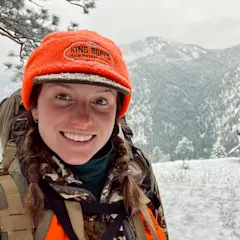On August 5, GIS software company onXMaps and national conservation non-profit Theodore Roosevelt Conservation Partnership (TRCP) released an interactive map detailing over 6 million acres of Bureau of Land Management lands that have been identified by the agency as available for eventual sale or disposal. The map highlights a grand total of 6,086,900 acres across 17 states and 160-plus BLM Resource Management Units, according to a press release announcing the launch.
“We created this map with TRCP to bring transparency to the land disposal process, to inform outdoor enthusiasts of nearby parcels [at risk of disposal]," said onX CEO Laura Orvidas, "[and] to encourage lawmakers to uphold existing policies that safeguard the public interest when considering any land sales." The approach lines up with other projects onX and TRCP have collaborated on in the past. In 2018, the pair built and published a series of maps and reports on landlocked public lands across the country. That effort eventually helped catalyze permanent funding for the Land and Water Conservation Fund.
Most federal agency actions impacting public lands must undergo a public review and comment period, according to the National Environmental Policy Act—commonly referred to as NEPA. Whether the agency ultimately takes the public’s input into serious consideration is often less clear. But when the public shouts loudly and in unison, sometimes the powers that be are forced to listen.
“Public lands, like those managed by the BLM, support 178.5 million outdoor recreation participants who rely on these landscapes to hunt, hike, fish, off-road, ski, climb, and bike,” Orvidas says. “The outdoor community cherishes these places, and has recently fought fiercely to keep them public.”
Recent attempts by lawmakers to strong-arm mass disposals of public land through either legislative or judicial means have brazenly disregarded legal requirements for public comment. But just because Utah Sen. Mike Lee had to pull his hotly contested land grab budget rider in the 11th hour doesn’t mean federal land sales won’t continue the way they always have: In smaller increments, at the behest of the landowning agency, with the public’s notice and input. According to TRCP, onX, and others, these 6 million acres are the ones the BLM would choose.
Now, folks who live, work, and recreate on or near these lands have a birds-eye view of what a disposal would mean for them—and a resource to cite if they eventually need to submit a public comment denouncing a proposed sale. After all, knowledge is power.
“For the first time, the public and policymakers can engage with one map that spans most BLM planning areas, and see public land parcels eligible for sale in the context of other landmarks, like towns, roads, and adjoining public lands,” TRCP president and CEO Joel Pedersen says. “TRCP is proud to partner with onX to share this valuable tool that shows specific locations of land that could be considered for sale."


